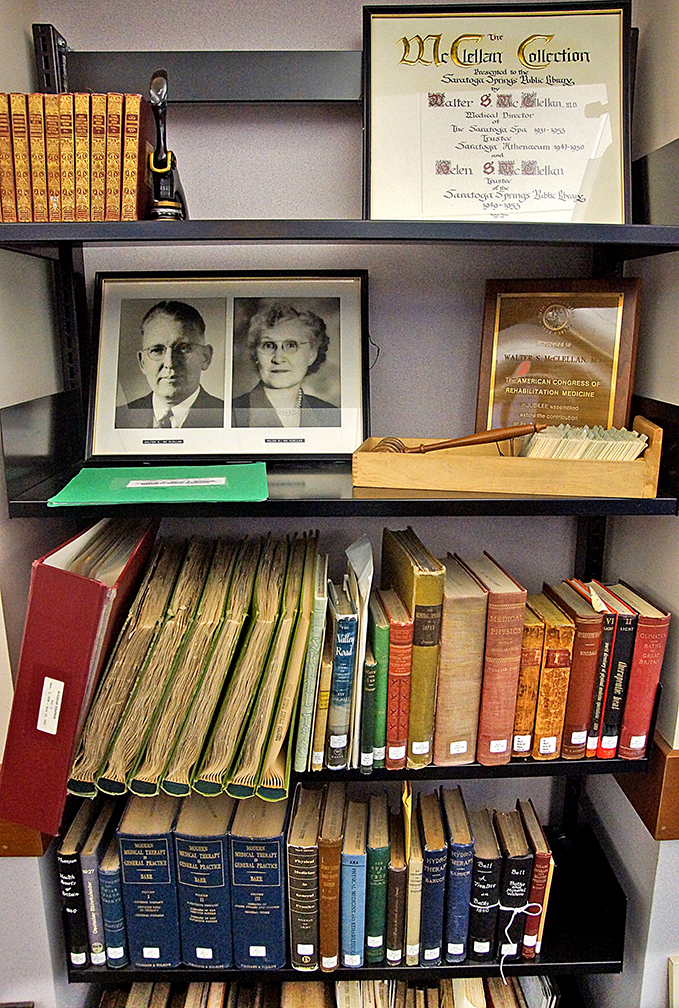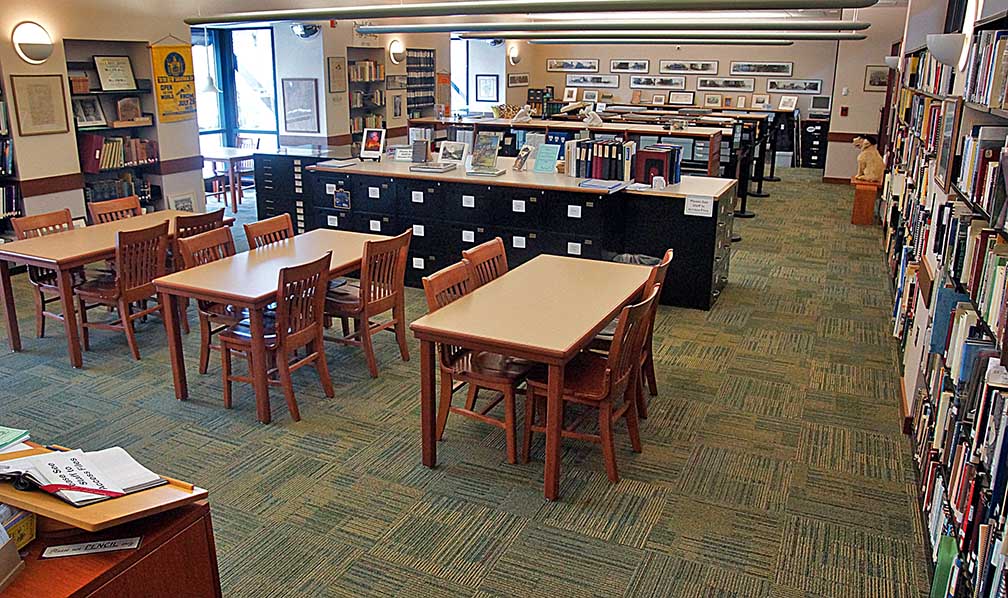A couple of years back, my boyfriend and I spent a spring and summer carving a big “S” across the continental United States. We started in Los Angeles, driving as far Southeast as New Orleans before doubling back through the Rockies for a wedding in Berkeley, CA. Then we set off again, this time for Seattle, eventually heading east, past the Great Lakes and, after a hellish night driving through dreary Pennsylvania, finally parked our car in Saratoga Springs.
My boyfriend grew up here, but it was my first experience in the spa city. I ate my first doughboy (the first of many) at Esperanto. We strolled through Congress Park. I tried the mineral water (the first and only time). We walked all over town, and everywhere there was a story, whether it be a pop culture tidbit or a piece of history dating back to the Revolutionary War. Of all the towns we explored during our five months on the road, I’d never seen a place chronicle and embrace its history like Saratoga.

It’s a rarity that a city of under 30,000 residents has its own history museum, a designated city historian and slough of historic tours and classes available to curious tourists and townies alike. But perhaps most unique to this town of chroniclers is the Saratoga Room, a large archive of Saratogiana in the heart of the Saratoga Springs Public Library (SSPL).
“The Saratoga Room has everything paper that you’re looking for—books written about Saratoga, old newspapers, maps,” says author, educator and Saratoga tour guide Dave Patterson. “Let’s say you’re curious about who used to live in your house in Saratoga. You can go to the Saratoga Room and look into the old Saratoga directories from 1868, and you’ll find out who lived there and what they did for a living. Or if you’re researching a project on Saratoga history, you could go to the Saratoga Room and find specific maps of how Saratoga changed over the years.” Patterson even uses the room for his local tour business. “I do extensive research before we do tours, and my go-to places are the Saratoga Springs History Museum and the Saratoga Room,” he tells me. Patterson wrote Take a Walk Back in Time, and A History of Saratoga Springs Coloring Book. He also contributed to the first chapter of Saratoga Springs: A Centennial History. (His work also appears in the January/February issue of saratoga living.)
The Saratoga Room has an extensive and well-maintained history of its own. The current iteration of the Room opened its doors along with the Henry Street location of the SSPL back in 1995. Before that, it was born of a 1967 addition made to what used to be the SSPL, the building that is now The Saratoga Arts Center on Broadway. Marion (Sonia) Taub, the local librarian at the time of the remodel, seized on the opportunity to create a new room for the library, “a space that focused on the history and people of Saratoga Springs,” says Mary Ann Fitzgerald, Saratoga’s City Historian. To move and expand the room to its current size was the brainchild of Jean Stamm, the former Assistant Director of the Library, who wanted to further the tradition of celebrating Saratoga’s history. Today’s Saratoga Room, which is packed with printed records and a handful of historic objects and artifacts, is now dedicated to Stamm’s memory.
Ellen de Lalla volunteers at the Saratoga Room, and before she retired, worked as a Local Historian at the Saratoga Room for 20 years. She started two of the Room’s oldest and most comprehensive databases: Notable Flyers and Saratoga Nicknames. “I loved it,” she tells me. “It was the best job I’ve ever had.” Jean Stamm began mentoring de Lalla back in 1987. According to de Lalla, she and Stamm planned the ’95 transfer together. They expected the new Saratoga Room to be roomier, with plenty of space for the materials being transferred over. Despite the additional space, de Lalla says the collection has grown exponentially over the years due to a steady stream of donations, and now the collection and drawers are “full to bursting.” I ask her what her favorite thing in the Saratoga Room is: “We had and still have the most comprehensive collection on the mineral springs of Saratoga, and without the mineral springs, none of this would have happened,” she says. De Lalla says it was the Native Americans’ discovery of the springs, and later the white settlers’, that brought Saratoga Springs into existence. “And we have the most wonderful array of data and material and scrapbooks and reports and analyses on the springs and stories and so on. So that to me is one of the stars of the collection.”

Teri Blasko was the first librarian to hold a full-time position at the Saratoga Room. “People would come up to me and say, ‘You have the best job in the library,'” she says. “When you got involved in questions, you really sunk your teeth into what you were doing…the information was very important to people. They were researching their family or for an article; they were book authors, people working on doctoral dissertations and masters theses; Skidmore faculty and students…it was a busy room.” Blasko has personally assisted a handful of authors, including saratoga living writer Field Horne, who co-authored Saratoga Springs: A Centennial History; and Janet Loughrey, who penned Saratoga in Bloom. She even met Arlo Guthrie when he tagged along with a friend researching her grandparents. “He sat down with a book on the history of Caffè Lena while his friend was doing her research and he very kindly autographed the book for us,” she says. Blasko’s favorite artifacts in the collection? “The Saratoga Room has a large collection of stereoviews, probably the largest collection in a public entity,” she says. (The stereoview is a primitive, 19th- and early 20th-century type of photograph.) Among the many images are scenes of Congress Park, Saratoga Lake, local landscapes and Saratoga’s most famous buildings and hotels. The collection is also a favorite of the Director of the Saratoga Springs Public Library, Ike Pulver, his close second being the Frank Sullivan Collection, which includes “items from the personal library of ‘The Sage of Saratoga’ with signatures and inscriptions by authors such as Groucho Marx and Edna Ferber,” he tells me. “Saratoga Springs is rich in history, and the Saratoga Room is rich in materials.”
“I wouldn’t know what to do if there weren’t a Saratoga Room,” says Joan Walter, a researcher for the Saratoga Springs Preservation Foundation House History. Walter compiles house histories for Saratogians who are interested in knowing the stories that surround their homes; she builds out 20-30 page documents full of whatever maps, directory listings, texts and records she can find on a particular abode. “I’m in the Saratoga Room a lot because they have a set of Saratoga Springs directories which start in 1868 and run through 1984, and when I’m researching, I look at those for every single year,” she says. “The directories are very important regardless of the house history aspect of them—they will tell anybody when their house was built and who lived there.” Walter’s favorite records in the Saratoga Room are the maps: “There’s 1852, 1866, 1876, birds-eye from 1888 and then there are Sanborn maps, fire insurance maps that go building by building…all of these maps which are, from my perspective, very useful.”

The history held within the walls of the Saratoga Room isn’t just for professional authors and historians. Patterson, who worked as a history teacher at Saratoga Springs High School and the University at Albany for more than 35 years, says that he and other teachers “started a course on Saratoga history that was very popular with the kids. We actually had to make a waiting list for it.” Patterson thinks that Saratoga is able to capture the interest of its younger residents, because “it has a great history, and it’s very reflective of American history.” But it goes deeper than that. “I think that the more we can get people to relate to history, the more appreciative they’ll become of where they live and how they got to where they are,” he says. “Almost every kid I’ve had in the very first class of Saratoga history knew that the potato chip was supposedly invented in Saratoga (see saratoga living‘s story on page 19 in the January/February print edition). But very few people knew the club sandwich was invented in the Canfield Casino. So as we would find little nuggets like that, they would get more and more drawn into it. By the time we were done they would say, ‘You know, we live in a pretty cool town.'”
It’s all too easy for someone to downplay the importance of a place like the Saratoga Room, what with all the scans of historical documents and vintage newspapers that have made their way online. But SSPL’s Local History Librarian Loraine Wies, who currently oversees the Room and has been on staff at the library for two decades, knows better. “Like beauty, the value of the Saratoga Room is in the eye of the beholder,” she says. “Each patron comes in looking for information to help them answer a question or solve a problem in their own lives.”
Perhaps the most important aspect of the Saratoga Room is its accessibility: It’s well-staffed, with generous hours that cover weekdays, evenings and Saturdays. Both residents and visitors can learn about Saratoga history without an appointment or even a library card. “Stop in and see us!” Wies encourages. “We guarantee you will learn something…and you can’t have a better day than one where you learn something new. That is the mission of Saratoga Springs Public Library—to inform, inspire and entertain.”
With a town as steeped in history as Saratoga, the Saratoga Room merits a visit just as much as the spas and Saratoga Race Course. “Our city slogan is health, history and horses—history is right there in our slogan,” Patterson says. “Long before we had the racetrack, we had the mineral springs and the history.” And rest assured, if you do find your way to the Saratoga Room soon, you’ll be happy to know that the friendly librarians there won’t leave any of your questions unanswered. This local journalist knows best.


